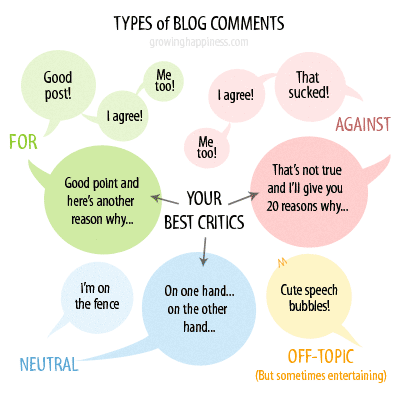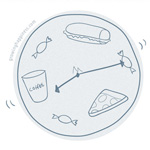September Ends, A New Habit Develops?
Last day of Nablopomo September. This is the second time I’ve participated in this daily writing project and like the previous time, towards the end, I get a bit er…lazy. I didn’t have a plan/stuck to the theme this time round. Some notes:
I’m not very good at doing this everyday, especially on weekends. My weekends are usually spent away from the computer, unless I really have to do some work.
It’s not everyday that I have something worth posting. So some posts suck. I feel bad for my readers.
I read that writing regularly can help improve your writing however this exercise has not made me a better writer. Writing well-crafted posts regularly may improve one’s writing but to do that everyday no matter what is a little difficult (not impossible) for someone like me whose ideas tend to come in sporadic, tiny clouds of inspiration.
I do find myself writing slightly faster now. I stop overthinking every little detail of my post before hitting the “publish” button.
I heard that it takes 30 days to form a habit. I don’t think I have developed daily writing habit. Yet.
I really admire folks who can write beautifully on a daily basis. Will I be doing this again in future? Maybe, maybe not. As it stands, I feel I’m doing my readers a disservice by forcing myself to post everyday whether or not there was something worth posting. But it is a lot of fun to look back and read fragments of thoughts preserved in writing here. I guess that’s why we keep journals.
Have you ever committed yourself to writing daily?
My Blogging History - How I started blogging
I didn’t really decide one fine day to start a blog.
I created my first personal website in 1999. I was looking for a job in web design then so it was a requisite to have your own website. The site showcased my design work, contained a little introduction about myself and included my resume.
When I got a job, the function of the website slowly evolved to that of an online diary (now called “blogging”), with a few of my pictures thrown in for no reason whatsoever (the early seeds of “camwhoring”).
I didn’t update the site regularly because if I had something to say to the world, I had to stop and think whether it justified the 50-minute process involved in publishing a file to the Internet.
For the uninitiated, in the pre-push-button-publishing era, updating a page involved editing HTML codes in a local application, saving the file and then FTPing the updated file to the server via a SLOW DIAL UP CONNECTION. The annoying part was, only after doing all that do you notice you had coded/formatted/written a paragraph wrongly. So you had to repeat the whole process all over again. Uploading photos? Before doing all the steps above, you had to go through the trouble of developing AND scanning photos (remember, those were the days of film camera). Phew!
Online publishing today is much simpler. It involves merely clicking the button called “publish” or “post” in your blog publishing application. I started using Blogger in 2005 and then WordPress in 2008.
How long have you been blogging?

Blog Bug
 As you may have noticed, there’s dearth of blog posts here. I also realised a few of the personal blogs I’ve been following seem to have reduced the frequency of postings too.
As you may have noticed, there’s dearth of blog posts here. I also realised a few of the personal blogs I’ve been following seem to have reduced the frequency of postings too.
Is it me or is there a blog bug going around? Have priorities shift this year? Has it got anything to do with the economy (less blogging, more worrying or ‘there’s nothing positive to blog about, so why bother’)? Or is it something else?
Thoughts on Blogging
Comments, Validation and Why We Need the Audience
Stephen wrote a interesting entry on blog validation in the form of comments at his blog One Life. I think most of us share what he is feeling sometimes (or most of the time).
When a blog entry is published, we can safely assume (with the exception of a locked private blog) that the author expects an appreciative audience . And rightly so, for we, as writers, would spend many hours trying to come up with, and edit to near-perfection, a post worthy of publishing to the world.
I used to spend quite a bit of my time wondering why only 1 out of 100 readers would leave me a comment but realised most of the time I myself am not participating in the conversation on other blogs because there’s really nothing new or interesting to add.
Unless a post is particularly provocative, the reaction generally consists of a few variations of agreement or disagreement. It’s like being in a classroom discussion– after the 11th person has voiced his opinion, there’s nothing much left to say that has not already been said.

Still, it’s great to have comments! My first blog was running for 7 months before I got my first comment – which is still one of the most exciting days in my early blogging history. :) I also look out for the best critics among my commenters as they are the ones who tell you like it is and probably move in between camps (for/against/neutral) according to what you’re posting.
Here’s something good to know: Problogger has about 50,000 subscribers (according to the displayed Feedburner widget). The actual number of readers may well be more than this but these 50,000 readers are the ones considered “engaged” — readers who care enough about the content of the blog to actually subscribe to the feed. A quick browse through some of the posts shows that less than 1% (or 500) of the readers would actually leave a comment. Steve Pavlina also mentioned in his blog that “well below 1% of visitors ever post a comment“. What are the other 99% doing? Probably just nodding quietly to themselves. How do I know? Because I myself did quite a bit of that nodding thing today. :D
![]()
While some of us see a comment count as the mark of a successful interactive blog, others preach high subscriber count at the true indicator of a blog’s success. Damien on the other hand has gone on to develop his own quantifiable rating system of measuring the success of his Funny Farm – i.e. CAN™.
With a blog that focuses on money-making, success is usually directly proportional to the number of readers the blog has. For other types of blogs, some people have said that the number of readers play a less important role in defining success.
I personally believe that we need an audience no matter what because we want to feel appreciated for our art, in this case, our writing. I don’t want to paint a beautiful picture and keep it locked in a room where nobody will ever see (even if I do not have the intention of selling it). I want it displayed in a gallery for all to appreciate and admire. I call this my “Excellence in Giving to Others”, or *ahem* ego for short. ;)

My ego loves performing in front of huge appreciative audience. She would like to thank you for choosing to read this entry. She is also fond of comments so please leave one (or two)? :D
Thoughts on 27 Thoughts
On Blogging for The Artist
I thoroughly enjoyed the list “27 Thoughts On Blogging For The Artist” on Problogger, a guest post by Robert Bruce of Knife Gun Pen. (Thanks to Diane at Please Sir for highlighting this on her blog)
Here are a couple of points from the list I want to discuss further:
1. There’s never been a better time to be a working artist. Ever.
2. There’s never been a worse time to be a working artist (if you’re not truly dedicated to your craft).

I can’t agree more with these two points. The speed and ease of reaching to a large, international audience is a double edged sword. If you’re in the creative industry — be it music, art, design, photography, craft, film — there’s no finer time to share your talent with the world. [Read more....]







